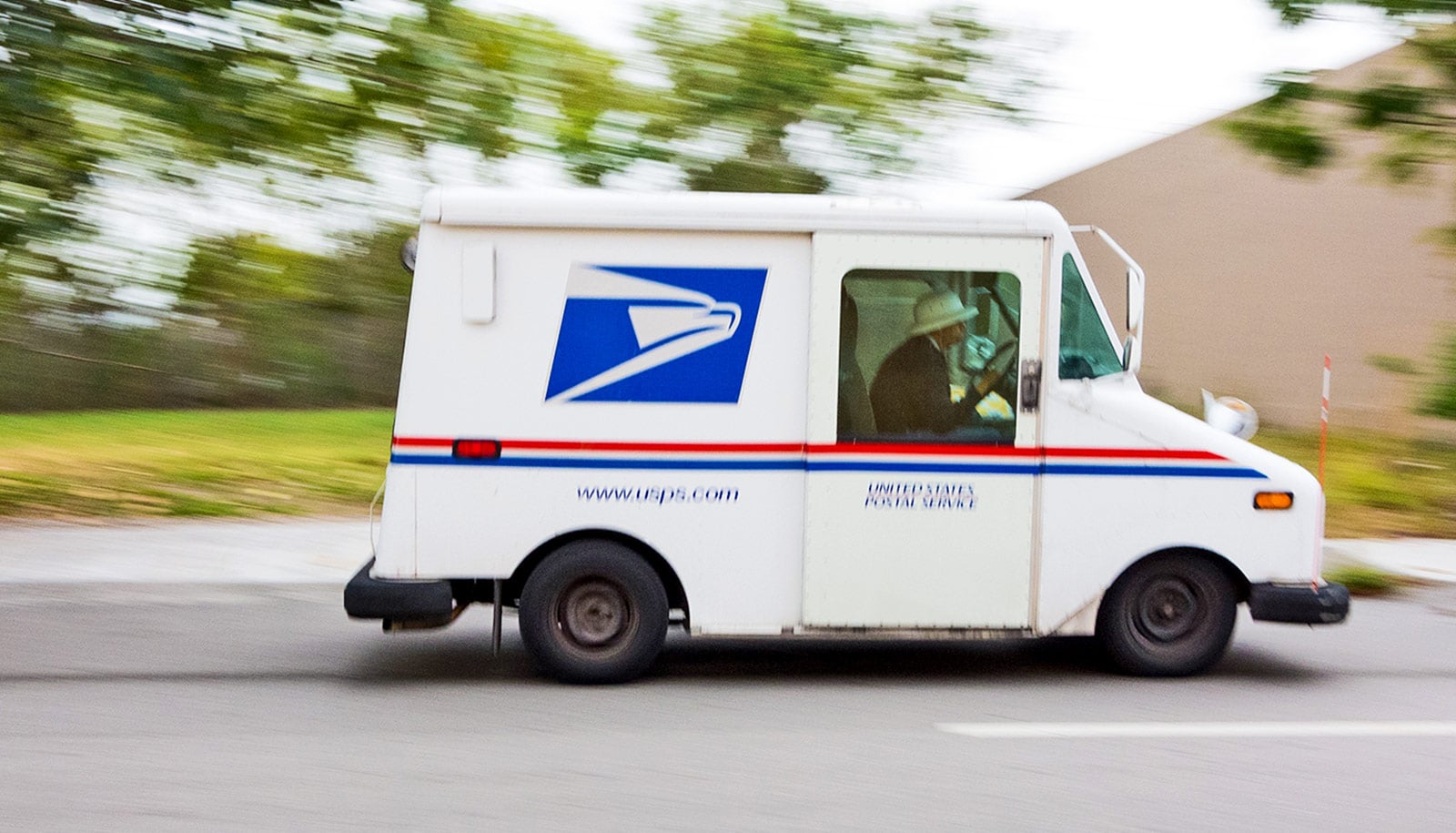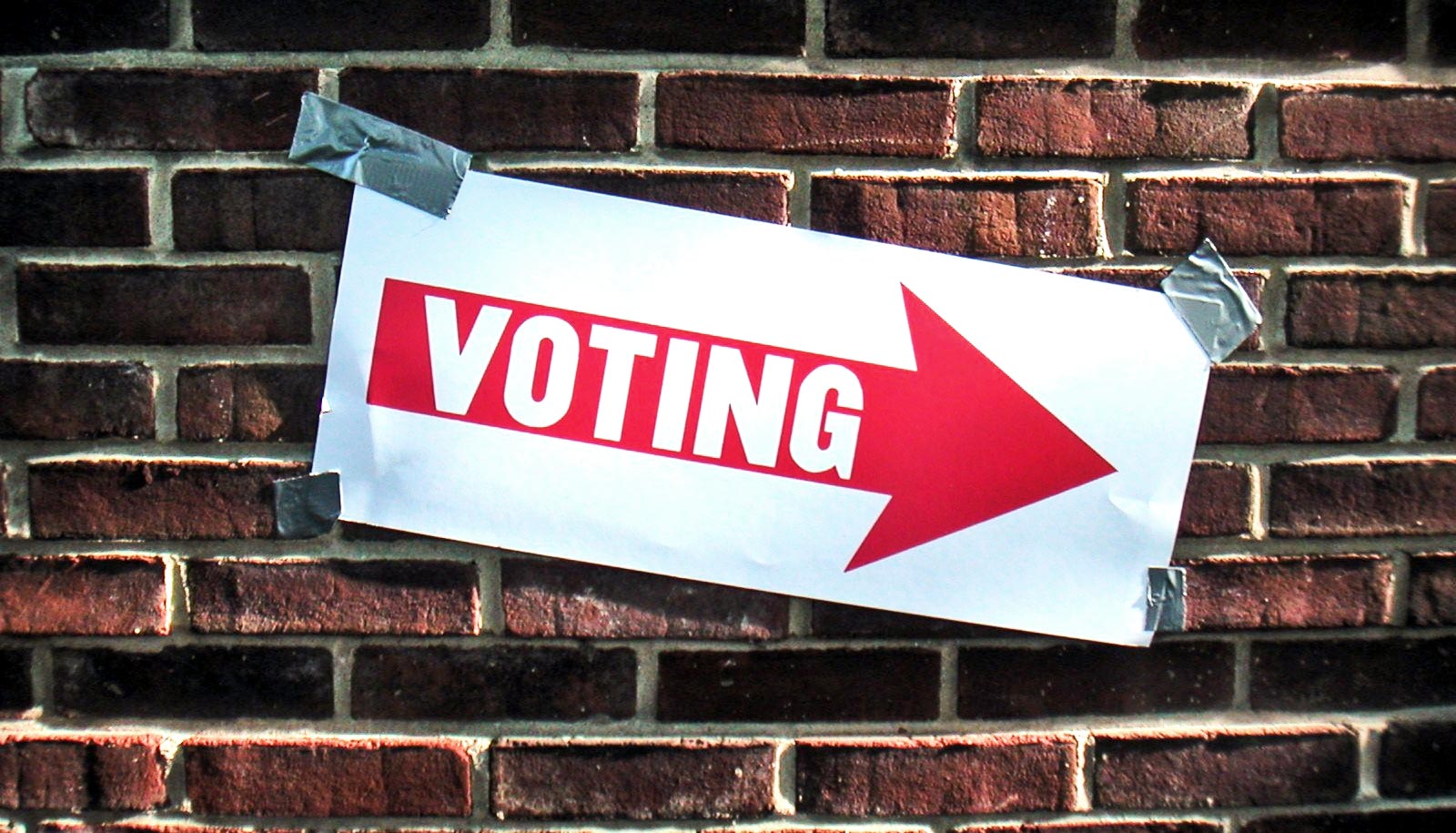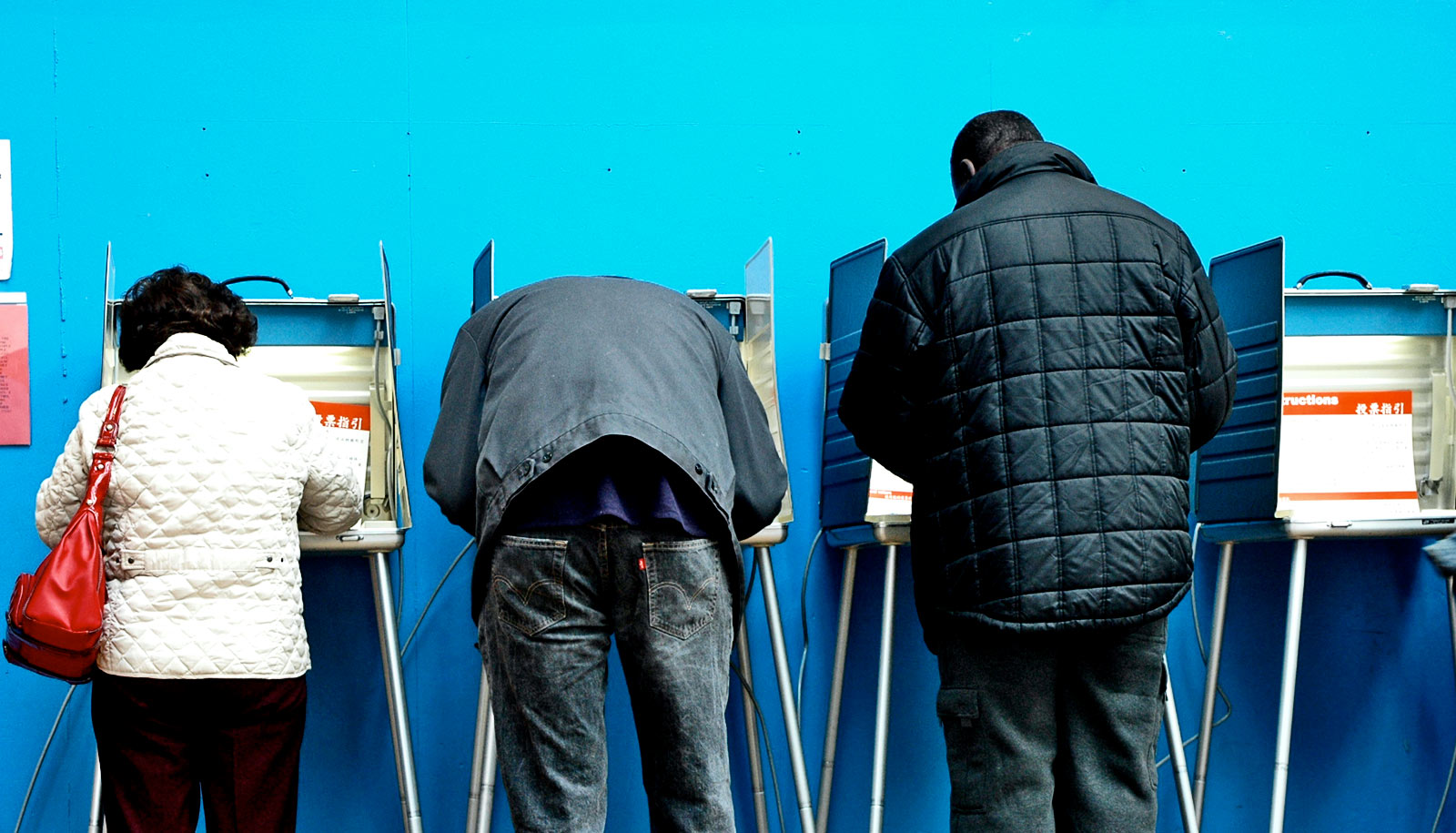
"Mail voting is very popular for the elderly, the disabled, and even for individuals who just simply want more convenience to cast a ballot," says Michael Ritter. "My research and research from others in the field have indicated that mail voting is a key driver of higher turnout, so it will likely continue to be very pivotal in the 2024 election." (Credit: Getty Images )
Speedier mail delivery could boost voter turnout
More efficient US mail delivery can boost voter turnout in all states no matter what their mail voting laws are, a new study shows.
A more efficient US Postal Service can increase voter turnout in all states regardless of their mail voting laws, new research shows.
For the study, published in the Election Law Journal , Michael Ritter, a researcher at Washington State University, analyzed election data from 2012 through 2020, when the pandemic encouraged many more people than usual to vote by mail.
He found that in general more accessible mail voting laws, such as universal mail-in voting and no-excuse mail voting, increased the probability that individuals would vote. Restrictive laws, such as requiring a witness’s signature or identification for mail-in ballots, had a negative effect.
Faster postal service helped increase the likelihood of voter turnout especially in those restrictive states—raising the probability individuals would vote by 3.42%.
“Across the board, this study shows that having better postal administration makes it more likely there will be more positive voter turnout outcomes linked to all mail voting laws ,” says Ritter.
“But in states that have the most restrictive mail voting laws, having better postal administration makes a huge difference—it may not seem huge, but for individuals who sometimes are on the fence about voting by mail or not voting at all, it can tip the balance.”
For the study, Ritter created models to estimate the probability whether individuals would become voters in the 2018 and 2020 elections in connection to mail voting laws and postal service efficiency. He drew on data from midterm and presidential elections from 2012-2020, the mail voting laws of each state, and the efficiency of local postal services based on their average, on-time, first class mail delivery, which can vary by zip code.
Mail delivery speed can determine whether a ballot arrives in time to be counted, Ritter says. Other research has indicated that a “non-trivial” number of mail ballots were not counted during the 2020 election because they were not delivered in time.
This study found that in states with the most restrictive mail voting laws, such as Alabama, the probability an individual would vote was 62%. This was lower than in states with universal all-mail voting, like Washington, Oregon, Utah, and Colorado, where the probability of a person becoming a voter in 2018 and 2020 was 70%. For the 33 states with no-excuse absentee laws, meaning voters can request a mail-in ballot for any reason, the probability was 65%.
In addition, so-called “cure” laws pushed voter probability higher, increasing it by as much as 3.2%. These laws mean officials will contact voters if there are problems with their mail-in ballot, such as a missing signature, giving voters a chance to correct it and have their vote counted.
Postal efficiency was particularly disrupted in 2020 with the pandemic causing huge numbers of people to vote by mail while the postmaster general at the time was reducing the numbers of postal processing machines.
Then-President Trump also falsely warned that mail-in voting was rife with fraud. Ritter notes that many studies have shown that voter fraud of any kind in the US is very rare.
Even with the pandemic officially over and a new administration in office, disputes over mail-in voting are likely to continue, Ritter says, making evaluation of the postal administration’s role in elections even more important.
“Mail voting is very popular for the elderly, the disabled, and even for individuals who just simply want more convenience to cast a ballot,” he says. “My research and research from others in the field have indicated that mail voting is a key driver of higher turnout, so it will likely continue to be very pivotal in the 2024 election.”
Source: Washington State University
The post Speedier mail delivery could boost voter turnout appeared first on Futurity .
Share this article:
This article uses material from the Futurity article, and is licenced under a CC BY-SA 4.0 International License. Images, videos and audio are available under their respective licenses.
Related Articles:
Will COVID-19 disrupt Election Day 2020?
May 1, 2020 • futurityThe 2008 recession cut voter turnout. This fall, too?
June 16, 2020 • futurityLinks/images:
- https://doi.org/10.1089/elj.2022.0060
- https://www.futurity.org/state-voting-laws-politics-elections-2961402/
- https://www.futurity.org/voting-by-mail-parties-2342282/
- https://www.futurity.org/voting-by-mail-voter-fraud-2400122/
- https://news.wsu.edu/press-release/2023/09/05/faster-postal-service-linked-to-better-voter-turnout/
- https://www.futurity.org/us-mail-delivery-voter-turnout-elections-2970022/
- https://www.futurity.org


